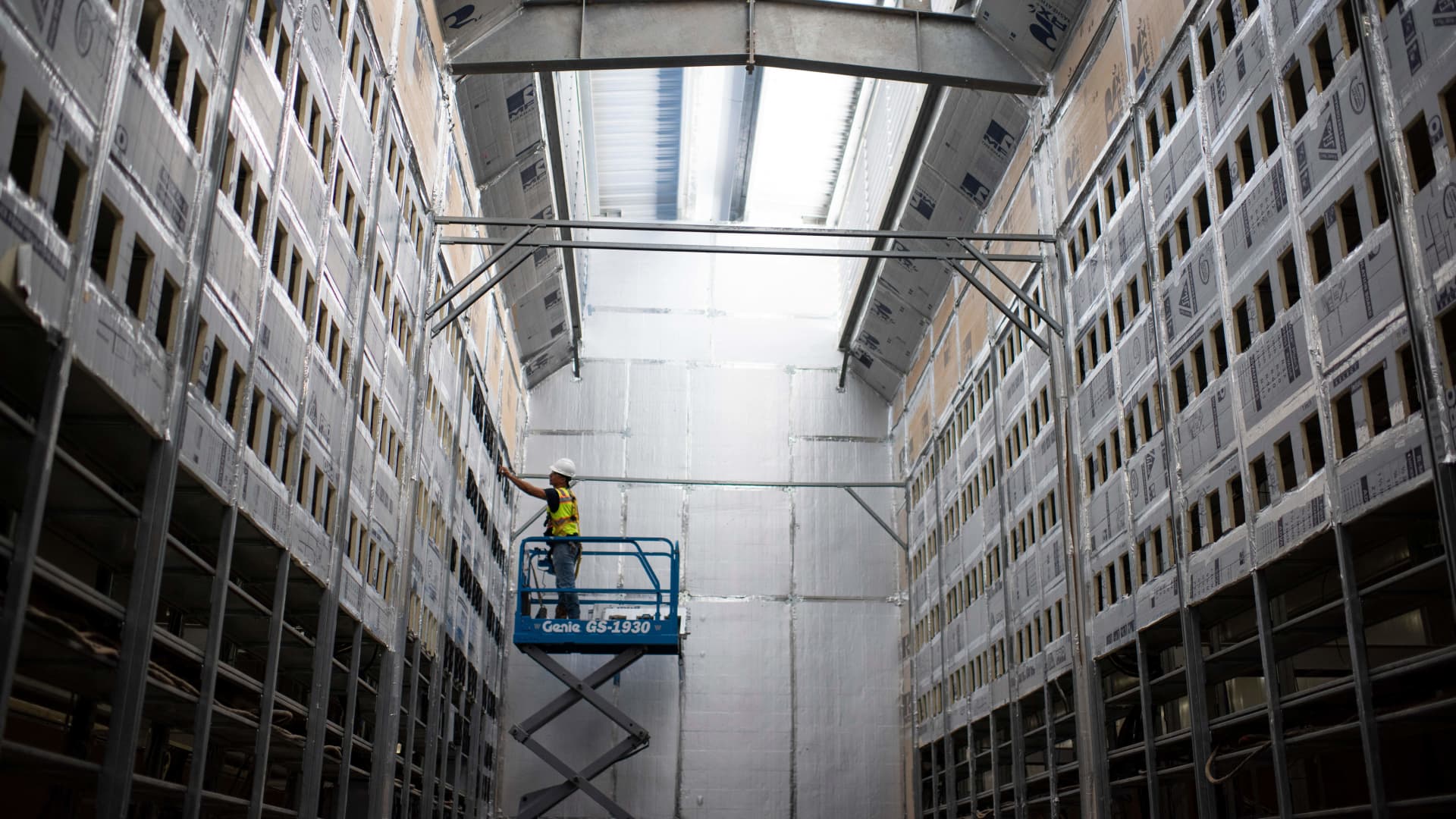Technology
Monday, July 18th, 2022 2:29 pm EDT

New data from blockchain analytics firm CryptoQuant shows that miners are rapidly exiting their bitcoin positions.
14,000 bitcoin, worth more than $300 million at its current price, was transferred out of wallets belonging to miners in a single 24-hour period at the end of last week — and in the last few weeks, miners have offloaded the largest amount of bitcoin since Jan. 2021. The phenomenon is called “miner capitulation,” and it typically indicates that miners are preparing to sell their previously mined coins in order to cover ongoing mining expenses.
Bitcoin is currently trading around $21,600, up about 3% in the last 24 hours. Still, the wider crypto market has been in a slump for months, with bitcoin down nearly 70% from its all-time high of around $69,000 in Nov. 2021.
Meanwhile, inflation is on a tear, and the cost of energy is hitting record highs as the war between Russia and Ukraine rages on.
Lower bitcoin prices and higher energy costs are compressing profit margins for miners, which is part of why some are selling bitcoin at current prices to try to contain exposure to continued volatility in the sector and mitigate against further risk to their bottom line.
“Given rising electricity costs, and bitcoin’s steep price decline, the cost of mining a bitcoin may be higher than its price for some miners,” Citi analyst Joseph Ayoub wrote in a note on July 5.
“With high-profile reports of resignations from mining companies, as well as miners that have used their equipment as collateral to borrow money, the bitcoin mining industry could be under growing pressure,” the note continued.
‘Our costs, expenses, and liabilities are in dollars’
Core Scientific, which is one of the largest publicly traded crypto mining companies in the U.S., sold nearly all its bitcoin in June. CEO Mike Levitt tells CNBC that just like any other business, bitcoin miners need to pay their bills.
“We mine and earn or produce bitcoin, but our costs, expenses, and liabilities are in dollars,” said Levitt.
It’s still profitable to mine bitcoin, Levitt says, with around 50% margins across the industry. That’s down from 80% margins at its peak.
Last month, Core sold 7,202 bitcoin at an average price of $23,000. Levitt tells CNBC they invested the proceeds of approximately $167 million primarily into growth-oriented activities, including new ASIC servers and additional data center capacity for their self-mining and colocation businesses.
But they also deployed some of that capital to repay debt and to help settle five years of employee stock grants.
Long-term, Levitt is optimistic because there’s tremendous positive operating leverage in the business. Over certain levels, every dollar increase in the price of bitcoin is 100% operating income to bitcoin miners.
“We would all be cheering loudly if bitcoin were to get back to $35,000, $40,000. There is no doubt about that,” he said.
But productivity per unit of electricity also matters, and when prices are low, large-scale miners like Core Scientific tend to face less competition from hobbyists and small operations.
“As prices fall, the global hashrate — or the competition for the production of bitcoin — decreases, as less efficient miners come off the network,” explained Levitt.
The hashrate is a term used to describe the computing power of all miners in the bitcoin network, and it is down 15% in the last month. That is ultimately a good thing for the large-scale miners who can afford to weather the downturns.
As less efficient miners come off the network and global hashrate declines, machines that continue to mine bitcoin get more productive.
“And thus, the cost of energy, if you will, per bitcoin produced, goes down,” said Levitt.
This post has been syndicated from a third-party source. View the original article here.




